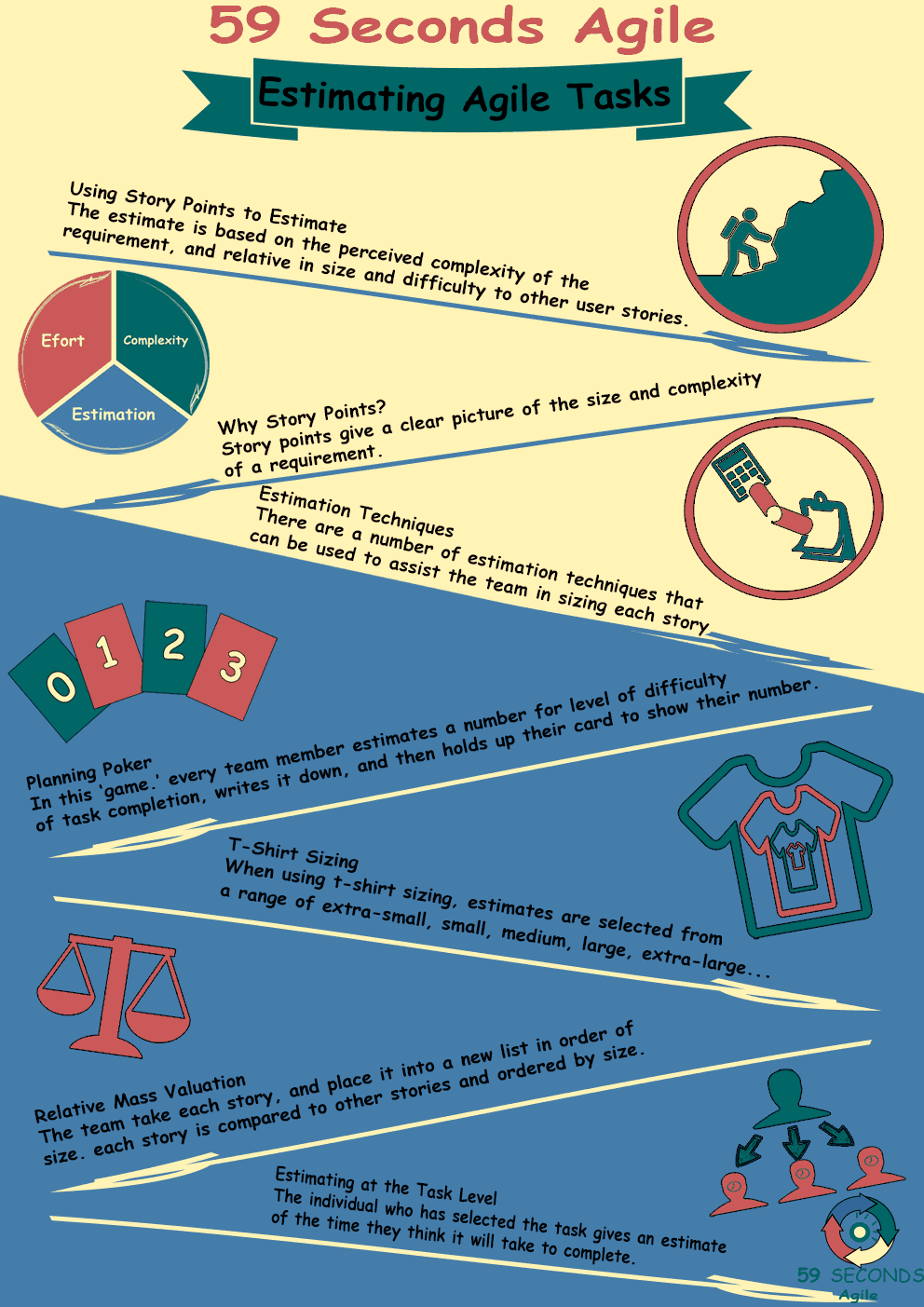Estimating Techniques
A 59 Seconds Agile Training Video
Continue to Part 8 Below
Estimating Techniques in Scrum
A 59 Seconds Agile Article
This article provides an ‘Introduction into Estimating Techniques’ and looks to discuss the different approaches to estimation and the benefits of each approach.
Estimating Techniques
An exercise for starting out with story points is: planning poker. Planning poker is a technique that requires everyone in the team to estimate the size and complexity of a user story by allocating it a number of points.
Each team member has a deck of cards with a sequence of numbers or some other measure that can be used to show the value they want to give to a particular story. Everyone in the team places their chosen card face down in front of them, and reveals their estimates at the same time.
The aim is for everyone to give the story the same score. The team members who have selected the highest and lowest values must briefly explain why they have chosen those values.
The team then chooses their cards again, until consensus is reached, or the majority vote is accepted by all. This is not a long drawn-out process and should take no more than a few minutes per story.
One of the benefits of planning poker is that it is a good team-building exercise; everyone has to participate and communicate why they made a certain choice, which tells the rest of the team a bit about their colleagues.
The democracy of planning poker is very different from traditional project planning, where a single person’s expert opinion is used as a measure of effort for a particular activity or feature.
Continue Reading —> Next
Estimating Techniques
A 59 Seconds Agile Video Animation
Continue Reading —> Next
User Stories Applied
A 59 Seconds Agile Book Review
User Stories Applied by Mike Cohn is one of our favourite books on Agile User Stories. The book starts with an overview into user stories, and details what a user story is and the different aspects of them. He then discusses how to go about writing a user story, and provides details of the INVEST criteria that can be used to determine if the story is meeting all of its objectives. Next Mike gives an in depth discussion of who user stories are written for and where to begin when gathering the details for them. The book then discusses acceptance testing user stories, including how to go about specifying these criteria and the responsibilities of the development team and customers during this process.
Continue Reading —> Next
Estimating Techniques
A 59 Seconds Agile Infographic

Continue Reading —> Next
Agile Scrum Master Training Course
Our Favourite Agile Books
We found these books great for finding out more information on Agile Scrum:
Continue Reading —> Next


